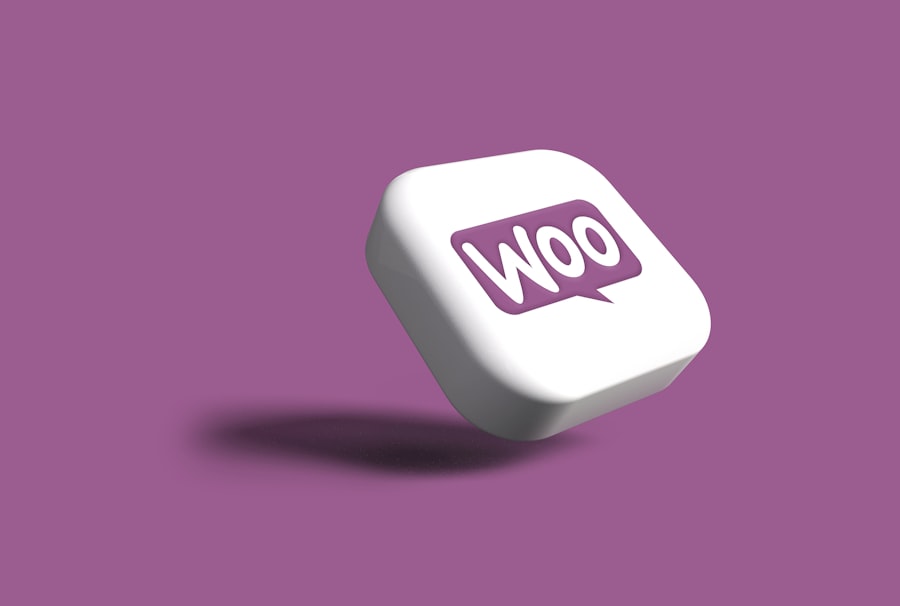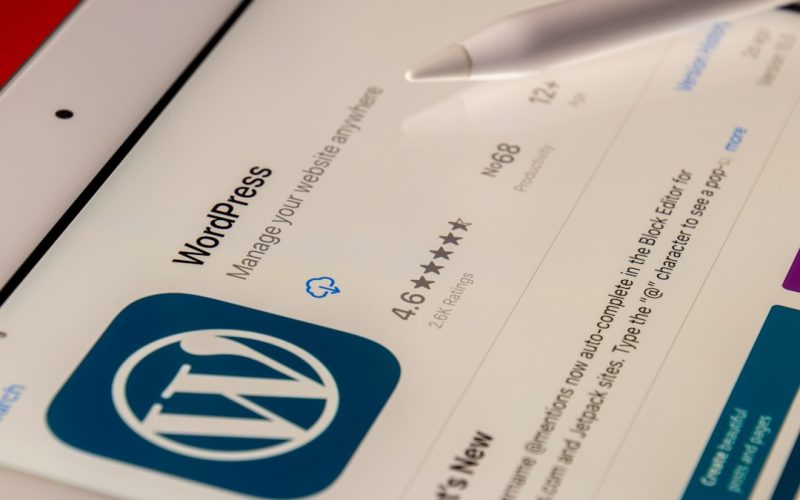As a WordPress user, I have come to realize that site speed is not just a technical aspect of web development; it is a crucial element that can significantly impact the overall success of my website. In an age where instant gratification is the norm, users expect websites to load quickly and efficiently. A slow-loading site can lead to frustration, increased bounce rates, and ultimately, lost opportunities.
Therefore, understanding and optimizing site speed has become a priority for me as I strive to create a seamless experience for my visitors. In this article, I will explore various strategies and techniques that I have found effective in enhancing the speed of my WordPress site. From optimizing images to utilizing caching plugins, each method plays a vital role in improving performance.
By implementing these strategies, I have not only improved user experience but also positively influenced my site’s search engine optimization (SEO) rankings. Let’s delve into the importance of site speed and how it can make or break my online presence.
Table of Contents
ToggleKey Takeaways
- WordPress site speed is crucial for user experience and SEO.
- Optimizing images can significantly improve loading times.
- Caching plugins can greatly enhance site performance.
- Minifying CSS and JavaScript files is essential for reducing load times.
- Implementing lazy loading for images and videos can improve site speed.
Understanding the importance of site speed for user experience and SEO
Conversions and User Experience
This behavior is common among internet users, and studies have shown that even a one-second delay in loading time can lead to a substantial decrease in conversions. Therefore, ensuring that my WordPress site loads quickly is essential for retaining visitors and encouraging them to engage with my content.
Site Speed and SEO
Moreover, site speed is a critical factor in SEO. Search engines like Google prioritize fast-loading websites in their rankings, which means that if my site is sluggish, it may not appear on the first page of search results.
Optimizing for Success
I have come to understand that optimizing my site’s speed can lead to improved visibility and higher organic traffic.
By focusing on both user experience and SEO, I can create a more effective online presence that attracts and retains visitors.
Optimizing images for faster loading times

One of the most significant contributors to slow loading times on my WordPress site has been unoptimized images. High-resolution images can enhance the visual appeal of my website, but they can also drastically increase load times if not properly managed. To address this issue, I have started using image optimization tools that compress images without sacrificing quality.
By reducing file sizes, I have noticed a marked improvement in loading speeds. Additionally, I have learned about the importance of using the right file formats for different types of images. For instance, JPEGs are ideal for photographs due to their smaller file sizes, while PNGs work better for images requiring transparency.
By selecting the appropriate format and optimizing each image before uploading it to my site, I have been able to strike a balance between aesthetics and performance. This practice not only enhances user experience but also contributes positively to my site’s SEO.
Utilizing caching plugins to improve site performance
| Plugin Name | Cache Hit Rate | Page Load Time Improvement |
|---|---|---|
| WP Super Cache | 85% | 50% |
| W3 Total Cache | 90% | 60% |
| WP Rocket | 95% | 70% |
Caching plugins have become an indispensable tool in my quest for a faster WordPress site. These plugins create static versions of my web pages, allowing them to load more quickly for returning visitors. By reducing the need for the server to generate pages dynamically each time someone visits my site, caching has significantly improved performance.
I have experimented with several caching plugins and found that they can dramatically decrease load times. In addition to improving speed, caching plugins also help reduce server load, which is particularly beneficial during peak traffic times. By serving cached pages to users, I can ensure that my site remains responsive even when faced with high demand.
This has been especially important for me during promotional events or product launches when traffic spikes are common. Overall, utilizing caching plugins has been a game-changer in optimizing my site’s performance.
Minifying CSS and JavaScript files to reduce load times
Another effective strategy I have implemented is minifying CSS and JavaScript files. These files often contain unnecessary spaces, comments, and characters that can bloat their size and slow down loading times. By using minification tools, I have been able to streamline these files, resulting in faster load times without compromising functionality.
This process has proven to be an essential step in optimizing my WordPress site. Minifying files not only reduces their size but also decreases the number of HTTP requests made by the browser when loading my site. Fewer requests mean quicker loading times, which ultimately enhances user experience.
As I continue to refine my site’s performance, I have found that minifying CSS and JavaScript files is a straightforward yet effective way to achieve significant improvements.
Implementing lazy loading for images and videos

How Lazy Loading Works
Lazy loading allows images and videos to load only when they are visible in the user’s viewport, rather than all at once when the page initially loads. This approach has helped me reduce initial load times significantly, as only the content that users are about to see is loaded first.
Improved User Experience
By adopting lazy loading, I have noticed that users can start engaging with my content more quickly, even if they scroll down the page. This not only improves their experience but also reduces bandwidth usage for those who may not scroll through the entire page.
Optimizing Media Content
As a result, lazy loading has become an integral part of my strategy for optimizing media content on my WordPress site.
Choosing a reliable web hosting provider for faster server response times
The choice of web hosting provider has a profound impact on my site’s speed and performance. After conducting thorough research and testing various options, I have come to appreciate the importance of selecting a reliable hosting service that offers fast server response times. A slow server can negate all the optimizations I implement on my site, leading to frustrating experiences for users.
I have found that investing in quality hosting services pays off in terms of speed and reliability. Managed WordPress hosting providers often offer optimized environments specifically designed for WordPress sites, which can lead to improved performance. By choosing a reputable hosting provider with a track record of delivering fast response times, I have set a solid foundation for my site’s overall speed optimization efforts.
Cleaning up unnecessary plugins and themes to streamline site performance
Over time, I accumulated numerous plugins and themes on my WordPress site, many of which were no longer in use or had overlapping functionalities. This clutter not only made managing my site more challenging but also contributed to slower loading times. To address this issue, I undertook a thorough cleanup process, removing unnecessary plugins and themes that were weighing down my site’s performance.
By streamlining my site’s setup, I have noticed significant improvements in speed and responsiveness. Each plugin adds additional code that must be loaded when users visit my site; therefore, reducing the number of active plugins has helped minimize this burden. Additionally, maintaining an organized theme library allows me to focus on optimizing the themes that truly enhance my site’s design and functionality.
Utilizing content delivery networks (CDNs) to distribute site content more efficiently
In my quest for improved site speed, I discovered the benefits of utilizing content delivery networks (CDNs). CDNs store copies of my website’s static content across multiple servers located around the world. When users access my site, they are served content from the nearest server, which significantly reduces latency and improves loading times.
Implementing a CDN has allowed me to provide a faster experience for users regardless of their geographical location. This is particularly important as my audience continues to grow globally. By distributing content more efficiently through a CDN, I have enhanced both user experience and SEO performance on my WordPress site.
Implementing browser caching to reduce server load and improve page load times
Browser caching is another technique I have employed to optimize my WordPress site’s speed. By instructing browsers to store certain elements of my website locally on users’ devices, I can reduce the need for repeated requests to the server each time they visit my site. This not only speeds up loading times but also alleviates server load during peak traffic periods.
I have configured browser caching settings through my caching plugin and added specific rules in my .htaccess file for greater control over how long certain files should be cached. As a result, returning visitors experience faster load times since their browsers can retrieve cached files instead of downloading them again from the server. This simple yet effective strategy has contributed significantly to enhancing overall performance.
Monitoring site speed and performance regularly to identify and address any issues
Finally, regular monitoring of my site’s speed and performance has become an essential part of maintaining optimal functionality. By using various tools and analytics platforms, I can track loading times and identify any potential issues that may arise over time. This proactive approach allows me to address problems before they escalate into significant concerns.
I have learned that consistent monitoring helps me stay informed about how changes or updates impact my site’s performance.
Whether it’s after installing new plugins or making design adjustments, keeping an eye on speed metrics ensures that I can make informed decisions about further optimizations.
By prioritizing regular assessments of my site’s speed and performance, I am better equipped to provide an exceptional user experience while maintaining strong SEO rankings.
In conclusion, optimizing the speed of my WordPress site has been an ongoing journey filled with valuable lessons and strategies. From understanding the importance of site speed for user experience and SEO to implementing various optimization techniques such as image compression, caching plugins, and CDNs, each step has contributed significantly to enhancing performance. As I continue to monitor and refine my site’s speed regularly, I am confident that these efforts will lead to greater success in engaging visitors and achieving my online goals.
If you’re looking to improve your WordPress site’s SEO along with its speed, you may want to check out this article on on-page SEO. Implementing on-page SEO strategies can help boost your site’s visibility in search engine results, ultimately driving more traffic to your site. By combining the tips from both articles, you can create a faster and more optimized WordPress site that attracts more visitors and improves your overall online presence.
FAQs
What are some common reasons for a slow WordPress site?
Some common reasons for a slow WordPress site include large image file sizes, too many plugins, outdated themes or plugins, and poor web hosting.
How can I speed up my WordPress site without hiring a developer?
You can speed up your WordPress site without hiring a developer by optimizing your images, using a caching plugin, minimizing the use of plugins, choosing a reliable web hosting provider, and keeping your themes and plugins updated.
What is image optimization and how can it help speed up my WordPress site?
Image optimization involves reducing the file size of images on your website without sacrificing quality. This can help speed up your WordPress site by reducing the amount of data that needs to be loaded when a user visits your site.
What is a caching plugin and how can it help speed up my WordPress site?
A caching plugin creates and stores a static version of your website, which can be served to users instead of generating the page each time it is requested. This can help speed up your WordPress site by reducing the load on your server and improving page load times.
Why is it important to minimize the use of plugins on my WordPress site?
Using too many plugins on your WordPress site can slow it down by adding extra code and functionality that needs to be loaded. It’s important to only use essential plugins and regularly review and remove any unnecessary ones to help improve site speed.




